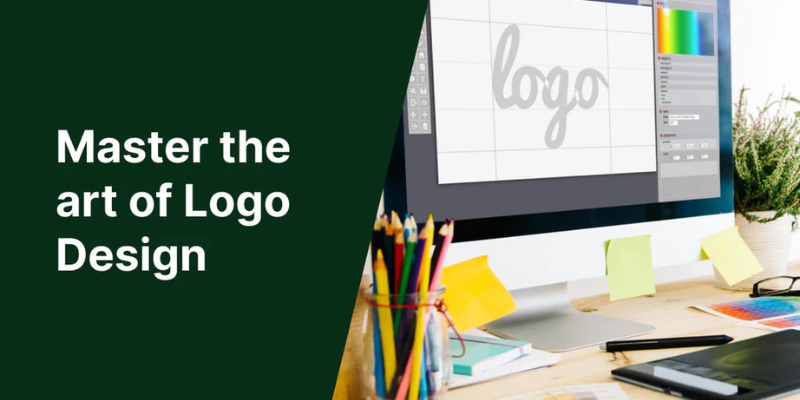Logo design is an essential aspect of branding that is the visual cornerstone of a company’s identity. A well-crafted logo distinguishes a brand and communicates its values and mission at a glance. Mastering the art of logo design requires a blend of creativity, technical skill, and a deep understanding of the brand’s essence. This blog will discuss how to master the art of Logo Design. Graphic Design Courses in Chennai at FITA Academy offer valuable insights and hands-on experience to further develop your expertise.
Understanding the Brand
- Research is Key: Before starting the design process, thoroughly understanding the brand you are designing for is crucial. This involves researching the brand’s history, values, target audience, and competitors. The logo should reflect the brand’s personality and convey the right message to the audience. For instance, a playful and vibrant logo might suit a children’s toy company, whereas a more sophisticated and minimalist design might be appropriate for a luxury brand.
- Define the Brand’s Message: Once you’ve gathered information, the next step is to simplify the brand’s core message visually. What does the brand stand for? What feelings should the logo evoke? Answering these questions will guide you in creating a design that aligns with the brand’s mission. To sharpen your skills, consider taking UI UX Design Courses in Bangalore. These courses can help you gain practical experience and insights to create effective designs.
Elements of a Strong Logo
- Simplicity: A powerful logo is often simple and memorable. Think of iconic logos like Nike’s swoosh or Apple’s apple—they are straightforward yet instantly recognizable. Avoid cluttering your design with unnecessary details. Focus on creating a clean, elegant design that conveys the brand’s identity in the simplest way possible.
- Versatility: A good logo should be versatile enough to work across various mediums and sizes, from business cards to billboards. This means it should look great in black and white and color and be scalable without losing clarity. Test your logo in different formats to ensure it maintains its impact.
- Relevance: Your logo should be relevant to the brand’s industry and audience. While it’s essential to be creative, the design should also align with the target market’s expectations. For example, a tech startup might benefit from a modern, geometric logo, while an organic food brand might opt for a more natural, earthy design.
- Timelessness: While it might be tempting to follow design trends, a great logo should stand the test of time. Avoid using overly trendy elements that might quickly become outdated. Instead, focus on creating a classic design that will remain effective and relevant for years. To help you achieve this, consider enrolling in a Graphic Design Online Course to develop your skills further and learn timeless design principles.
The Design Process
- Brainstorm and Sketch: Begin the design process by brainstorming ideas and sketching out concepts. Don’t limit yourself during this phase—explore different styles, shapes, and fonts. Sketching allows you to quickly visualize ideas and refine them before moving on to digital design.
- Choose the Right Typography: Typography plays a crucial role in logo design. The font you choose should complement the logo’s design and reflect the brand’s personality. Whether you opt for a custom typeface or a popular font, ensure that it is legible and aligns with the brand’s message. Pay attention to spacing, weight, and how the text interacts with other design elements.
- Color Theory: Color plays a vital role in logo design, as it can evoke specific emotions and associations. For example, blue is often linked to trust and professionalism, while red conveys energy and passion. To create a strong visual impact, limit your palette to two or three colors for simplicity. If you’re looking to enhance your color selection and design skills, UI UX Design Course in Marathahalli offer valuable insights into color theory and its application in logo design. These courses can help you master the art of using color effectively to communicate your brand’s message.
Refining Your Design
- Seek Feedback: Once you’ve developed a few logo concepts, seek feedback from colleagues, clients, or even your target audience. Constructive criticism can provide valuable insights and help you identify areas for improvement. Don’t be afraid to iterate on your designs based on the feedback you receive.
- Test the Logo: Before finalizing your design, test it in different environments and platforms. How does it look on a mobile app versus a print ad? Does it retain its clarity and impact when scaled down or enlarged? Make any necessary adjustments to ensure your logo performs well in all settings.
- Final Touches:
Mastering the art of logo design is a journey that requires a deep understanding of branding, attention to detail, and continuous learning. By focusing on simplicity, versatility, relevance, and timelessness, you can create logos that stand out and effectively represent the brand’s identity. As you refine your skills, remember that practice, feedback, and a commitment to excellence are key to becoming a proficient logo designer. Whether you’re designing for a startup or a well-established brand, the principles outlined in this blog will guide you toward creating impactful and memorable logos. If you want to enhance your skills further, consider enrolling in a Training Institute in Chennai to gain more expertise and practical knowledge in logo design.

